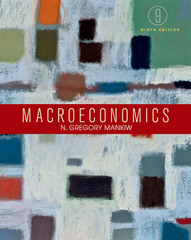Question
Liv is deciding how many hours of leisure l she should take on a typical day, and how much she should consume. Her utility function
Liv is deciding how many hours of leisure l she should take on a typical day, and how much she should consume. Her utility function is u(c, l) = c + f (l); where f (l) is a function satisfying f (l) > 0 and f (l) < 0. Assume > 0. The consumption good c has price 1. a. Compute the marginal utility of consumption and marginal utility of leisure. What's the special feature of this utility function? b. Liv maximizes u(c, l) subject to a budget constraint. She starts the period with income M , and earns w > 0 for each hour h worked. Every hour of work is subtracted from leisure, so l = 24 h. Write down the budget constraint as a function of c and l. c. Write down Liv's maximization problem, i.e., she wants to achieve the highest utility subject to the budget constraint. d. Assuming f (l) = ln l (natural log of l), solve for optimal c and l. e. Given that M and w are both sources of earnings, why is the effect of changes on M and w on l so different? Provide as detailed an answer as you can.
Step by Step Solution
There are 3 Steps involved in it
Step: 1

Get Instant Access to Expert-Tailored Solutions
See step-by-step solutions with expert insights and AI powered tools for academic success
Step: 2

Step: 3

Ace Your Homework with AI
Get the answers you need in no time with our AI-driven, step-by-step assistance
Get Started


